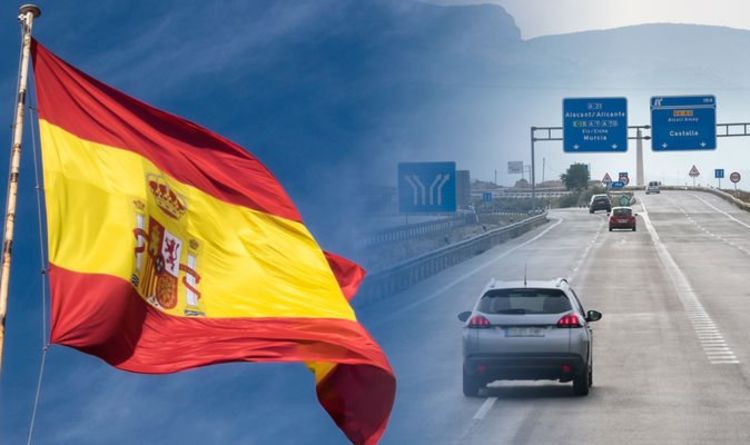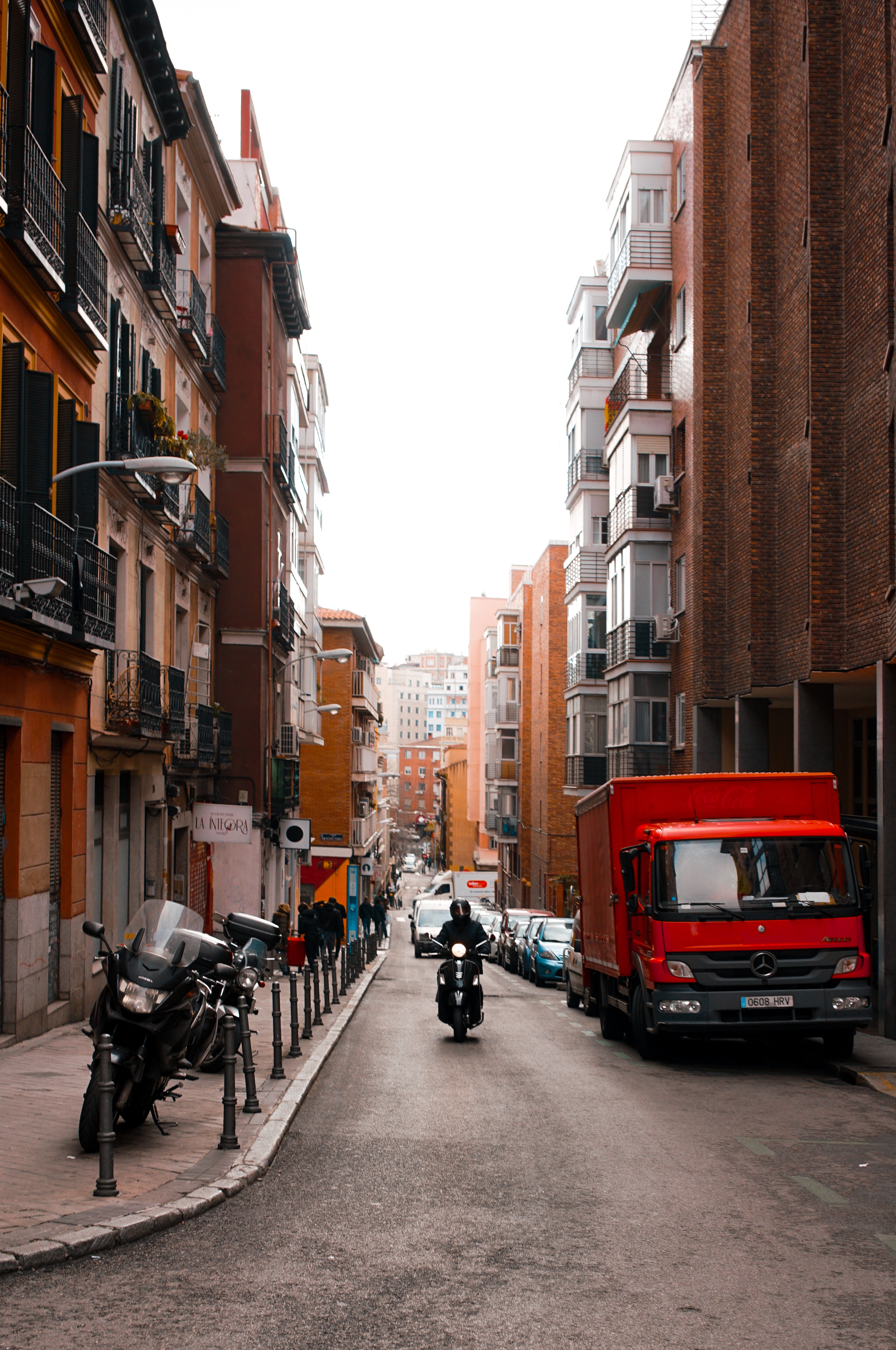
Driving in Spain as a UK citizen: things you must know
UPDATE: March 16 2023 UK and Spain Reach Driving License Exchange Agreement
1. After the transition period of Brexit, you need to obtain a Spanish driver's license:
2. Differences between the Spanish and English driving laws
3. Other things you need to know when driving in Spain:
4. At Adeslas, we care about your mobility and safety
1. After the transition period of Brexit, you need to obtain a Spanish driver's license:
If you want to drive in Spain as a UK resident after the end of the transition period, you need to start thinking about exchanging your UK driver's license for a Spanish one. According to the latest announcement after over 10 months of talks, the UK and Spain have finally reached a deal in the protracted driver's license exchange negotiations. From March 16, 2023, UK license holders resident in Spain have a six-month grace period that allows them to once again drive using their UK license. During this time they will be allowed to exchange their driver’s license for a Spanish one without having to take a Spanish driving test. The British Embassy in Madrid strongly urges UK citizens to exchange their licenses for a Spanish one as soon as possible.
You should be aware that your driver's license cannot be exchanged if you obtained it in your country of origin while already legally residing in Spain. Nor are you eligible if you obtained your license after the exchange agreement was signed.
Therefore, if you want to reside in Spain it’s recommended to request the exchange, renewal, or replacement of your permit for an equivalent Spanish one. To do so, you should make an appointment here.
2. Differences between the Spanish and English driving laws

- The most obvious and important difference is that you should drive on the right-hand side of the road in Spain. It could be hard for UK drivers to adapt because it requires changing their driving habits.

- Spain has strict drink-driving laws, only allowing 0.5 milligrams of alcohol per milliliter of blood - stricter than the UK where the limit is 0.8. New drivers are effectively forbidden to drink and drive, with a very low 0.1 mg/l limit. However, the penalty is not as strict, which contains a fine of up to 600€, a deduction of six points from the driving license, and suspension of driving license for three months. A minimum fine of 1,000 Euros will be paid by drivers caught driving with double the drink-drive limit, under drug influence.
- When approaching a roundabout in Spain, you should give way to the traffic already on the roundabout on your left, unless it is already signed differently.
- If you have children in cars, you need to beware of the following terms:
- Includes all seats for babies from just born up to when they have 105 cm in height. These baby seats must be attached with Isofix, with the only exception of seats for children of 15 months old that can be strapped with the car seatbelt.
- Includes all seats for children with a height over 100 cm, the boosters must have a rigid back to improve child protection in case of an accident.
- An obligation to put all baby seats in the opposite direction for children under 80 cm of height or under 15 months old, can be made mandatory.
- According to DGT regulations in 2015, all child car seats, boosters, etc must be placed in back seats when the children’s height is not bigger than 135 cm, but there are some exceptions:
- When the car only has two seats
- When all back seats are already occupied by other children
- When there’s no possibility of placing the child's car seats in the back seats.

If any of these exceptions apply, the child could be seated in the front seat but always in a baby seat following his/her weight and size. If the seat is in the same direction as the movement of the car, there must be an active airbag. In case the seat is in the opposite direction, the airbag must be inactive. Lateral airbags may be kept active.
- Radar detectors and laser signal scramblers are illegal as they are said to interfere with speed monitoring systems. You will be faced with a fine of €6000 if your car is found with it installed. However, GPS is still legal, and the Spanish Transport Department has created an app for the public with all the speed camera locations, where most fixed speed cameras are signposted.
- Like in the UK, the seat belt is necessary for both front and rear seats. In the UK, the fine for not wearing a seat belt can be £100 or up to £500. In Spain, if you do not have it well fastened, the person without a belt will be charged 200€
- You cannot drive in flip-flops or open-backed sandals, nor can you drive shirtless. Not only is this dangerous but also the police may fine people for this once detected, especially in holiday seasons or specific areas.
3. Other things you need to know when driving in Spain:
After Brexit, there are other new rules or other tips that you should beware of:
- After Brexit, you need to have a GB sticker when driving a UK-registered car in Spain, regardless of the type of number plate fitted (a number plate that displays both the EU flag and a GB symbol in its left-hand column). Before Brexit, only those UK-registered cars without a Euro-plate needed a GB sticker.
- After Brexit, UK drivers are required to register commercial trailers weighing over 750kg and non-commercial trailers weighing more than 3,500kg before they can be towed.
- If you are planning to take your car buying in the UK to EU countries, you should check with your car insurer to make sure that if you’re involved in an accident with a European motorist and want to claim them, your insurer will contact their insurer on your behalf and deal with it for you. Before Brexit, this was not required because you could contact the Motor Insurers´ Bureau (MIB) to do so. If your insurer does not provide this service, you need to deal with a Spanish company.
4. At Adeslas, we care about your mobility and safety
At Adeslas, we consider your overall safety and also offer the best accident insurance offers. You can contact us to know about our car insurance by phone call (+34 911746191), WhatsApp (+34 640048309), or email ([email protected]).
If you would like to know more about this topic, check out one of these other blogs:
- Driving in Spain vs Driving in the US: things you must know
- Driving in Spain vs Driving in Australia: things you must know
- Guide to understanding "driving points" in Spain
- Driving in Spain: confusing Spanish road signs and what they mean?
- Spanish ITV car test: all you need to know about as an expat
- Riding a motorcycle in Spain: what motorcycles, mopeds, and scooters can I ride?
- Riding a motorcycle in Spain: what regulations or laws should I remember by heart?
- A simple guide to the exchange, replacement, and renewal of your UK driving licenses
- Steps to request a driving license exam in Spain
Reference:
[1]dgt, w. (2021). Conducir tras el Brexit(driving after the Brexit). Retrieved 4 August 2021, from https://revista.dgt.es/es/noticias/nacional/2020/01ENERO/0131-Conducir-ante-el-Brexit.shtml#
[2] Exchanging the UK Driving Licence for a Spanish Permit on 16 March (2023). Retrieved 14 June 2023, from https://www.citizensadvice.org.es/exchanging-the-uk-driving-licence-for-a-spanish-permit/
[3] Tips, G., & Offers, S. (2015). Speed Camera Detector Laws - Sixt Car Hire Magazine. Retrieved 4 August 2021, from https://www.sixt.co.uk/magazine/travel/speed-camera-detector-laws/
[4] UK and Spain Reach Driving License Exchange Agreement 17 March (2023). Retrieved 14 June 2023, from https://www.barcelona-metropolitan.com/living/uk-and-spain-reach-driving-license-exchange-agreement/
Our content will be updated according to the most recent legislation. Last update: 14/06/2023
Search in Blog
Tags
Subscribe to our newsletter
Your insider guide to healthcare, legal, and tax in Spain.
By subscribing, you agree to our Privacy Policy.